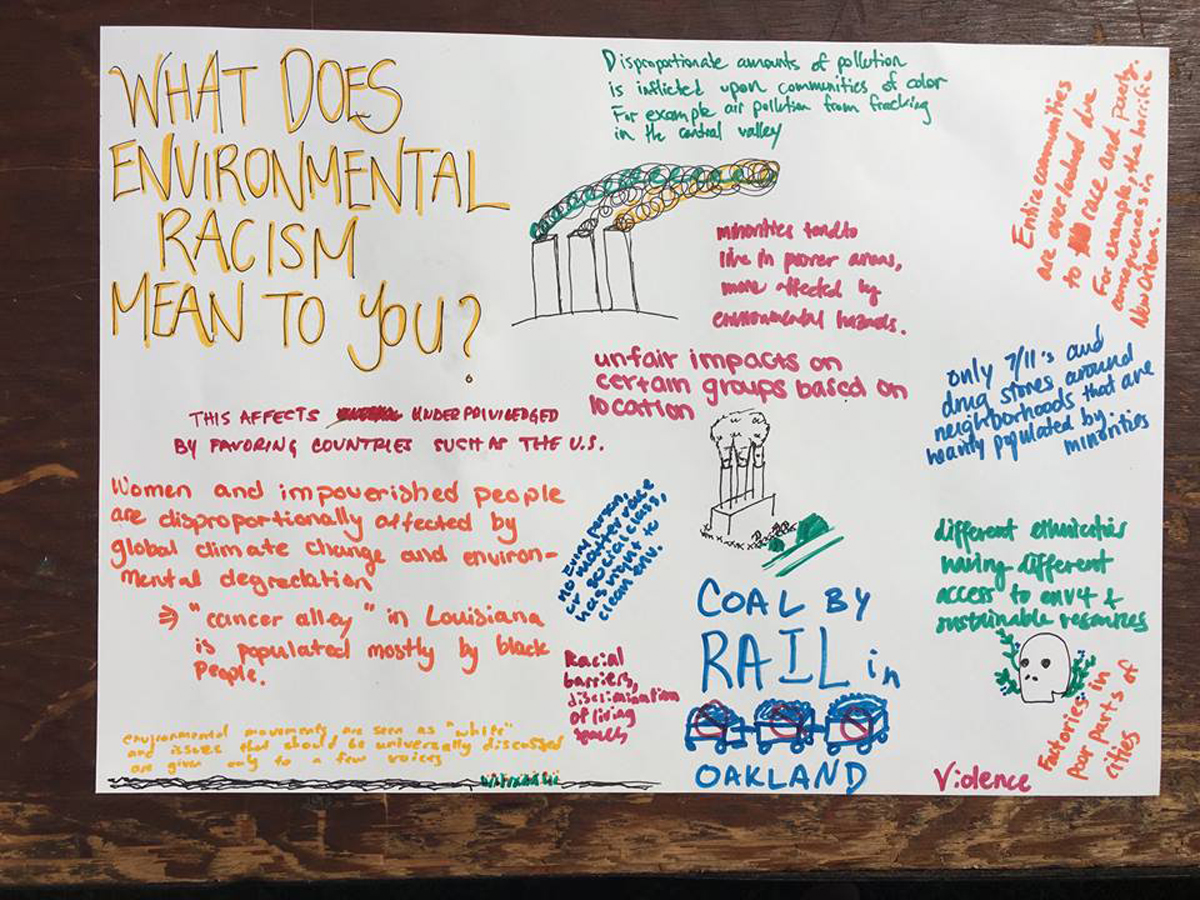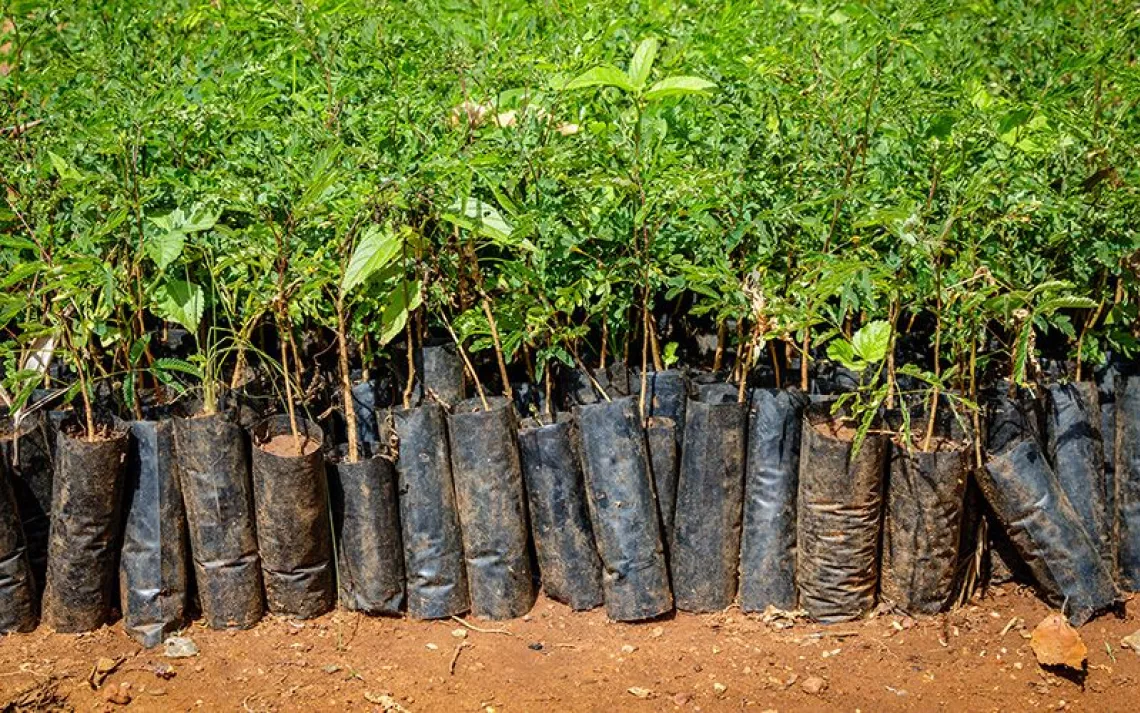Green Students Resist Whitewashing
Meet the activists behind the Students of Color Environmental Collective

SCEC member Kristy Drutman | Photo courtesy of UC Berkeley's Students of Color Environmental Collective.
Whether or not we see ourselves (or at least parts of ourselves) reflected in those wielding power can make a big difference in terms of our own leadership aspirations. The State of Diversity in Environmental Organizations, a 2014 report commissioned by the Green Diversity Initiative, examines the demographic realities of mainstream environmental work—in government environmental agencies, grantmaking foundations, and conservation and preservation organizations.
The report found that people within ethnic minority groups make up no more than 16 percent of the boards and general staff of those three types of institutions, and hold fewer than 12 percent of leadership roles. The single position more likely to be occupied by a person of color than by a white person? The “diversity manager.” (That being said, many organizations surveyed didn’t include such a position.)
The group this imbalance arguably hits hardest is young people, who are often seeking leadership role models. Such imbalance highlights the need to promote equity, justice, and leadership that more accurately reflects communities’ racial, ethnic, social, and cultural make-up, and it’s what drove the creation of the Students of Color Environmental Collective (SCEC) at the University of California, Berkeley in April of 2015. SCEC is the famously progressive university’s first-ever environmental student group dedicated to the experiences of those who are historically underrepresented in mainstream environmentalism.
The group self-identifies as “a healing space for students of color to seek refuge from white-dominated environmental and social justice spaces.” Although SCEC hosts plenty of events that are open to the public such as movie screenings and justice-centric workshops, members ask that students respect the space as one dedicated, specifically, to people of color. This request is born out of the reality that most students, and an overwhelming majority (80 percent) of professors within UC Berkeley’s College of Natural Resources (CNR), are white.

SCEC's logo | Concept and art courtesy of Amanina Shofry; design courtesy of Kelly Chang
The alarming irony is that communities of color are disproportionately at risk of and in direct contact with environmental danger and degradation. SCEC’s efforts mark some of the first public signs of awareness within university environmental communities of the paradox of a white-dominated conversation about the needs and experiences of people of color.
“When I first entered environmental spaces, I was enamored with the passion, fire, and energy my colleagues had to fight against dirty, polluting industries,” says Kristy Drutman, an environmental organizer, SCEC member, and CNR student. “As time went on, however, I began to feel a bit disillusioned, as I realized just how inaccessible our movement was.” As a Filipina-American aware of the “non-traditional” nature of her career path, Drutman experienced the consequences of a historically white-male-dominated and socially exclusive environmental movement on a deep, personal level. “The discomfort of being one of the only Brown bodies in countless environmental spaces—whether it was in my classes at UC Berkeley or off-campus organizing—led me to recognize how exclusive and out of touch the environmental movement has been with low-income communities and communities of color.”
SCEC, which connects 270 members via a private Facebook group, continues to grow each semester. At weekly meetings, members come together in person to share and explore the intersections of race, class, gender, culture, and the environment—and to chip away at the notion that an interest in the environment or nature has to manifest a certain aesthetic (i.e. that of Patagonia-clad hikers raving about smoothies crafted from organic veggies they personally harvested while barefoot).
“As someone who identifies as queer and a person of color, I was having a difficult time feeling a sense of belonging in classes, in office hours, and with other environmental organizations on campus,” says Evan Yoshimoto, a CNR student and devoted environmental activist. “SCEC gave me space to be vulnerable with my experiences in the environmental community—and the community empowered me to use my voice to speak more truth to power.”
One SCEC highlight from this past spring semester? A Privilege Workshop for white environmentalists, which Drutman describes was a “space for dialogue rather than lecturing white folks on how to be better allies to students of color in environmental spaces." She reports, “We were able to challenge white fragility and call loudly for the need for collective compassion and care when doing movement building work.”
Other noteworthy endeavors include SCEC’s collaboration with Oakland-based Phat Beets Produce, to hold a community event celebrating the Black Panthers Party’s Free Breakfast for School Children Program, the launch of the SCEC-original hashtag and photo story project #EnvironmentalismSoWhite, and a memorial service honoring those environmentalists of color murdered in their pursuit of environmental justice, such as Berta Cáceres.

SCEC engages members on the topic of environmental racism with this collaborative mural. | Photo courtesy of UC Berkeley's Students of Color Environmental Collective
Last March, SCEC members delivered a letter in person to the CNR dean, outlining demands including the allocation of more resources to the recruitment and retention of students of color, the hiring and retention of more professors of color, dramatic improvements to existing environmental justice curricula, and a meeting with CNR’s administration to discuss specific steps to realize these demands. With confidence and force, SCEC members read the letter aloud in CNR’s administrative office. “We are not blaming CNR for the racist organization of societal institutions, but rather for being completely complacent in upholding white supremacy in our own institutional space. Understanding racism as it manifests in mainstream environmentalism isn’t enough; there need to be active efforts within CNR to dismantle these systems of oppression.”
Asked how he feels the college fares in terms of diverse representation, Dean Keith Gilless says, “CNR is not doing badly in a relative sense [when compared to other colleges within in UC Berkeley]... Is higher education doing well in a relative sense [when compared with other universities]? The answer is no.”
CNR may indeed not be “doing badly in a relative sense,” but neither the dean nor associate dean Lynn Huntsinger tried to pretend that CNR was actually “doing well” in their diversity efforts.
Later on in the spring, SCEC members sat down with the two administrators to talk collective strategy. They came away with a list of action items related (but not identical) to those demands SCEC had originally put forward. “Demands are really hard—especially when we can’t meet them, which we couldn’t,” says Huntsinger, “so we thought, ‘Let’s work on some other ways forward.’”
A few action items deemed mutually feasible? Inviting SCEC to lead a diversity- and inclusivity-themed training/workshop for a teaching course mandatory for all new graduate student instructors (aka TAs) and updating the CNR Peer and Faculty Advising programs to dedicate positions to students and faculty of color committed to communicating environmental work’s relation to race, politics, justice, and inclusion.
While it’s undeniable that headway is being made, Evan Yoshimoto of SCEC says, “They [the CNR administration] have not made progress at meeting these demands at the level we are pushing for. That being said, we will continue to push for our demands in the 2017-2018 school year.”
 The Magazine of The Sierra Club
The Magazine of The Sierra Club



